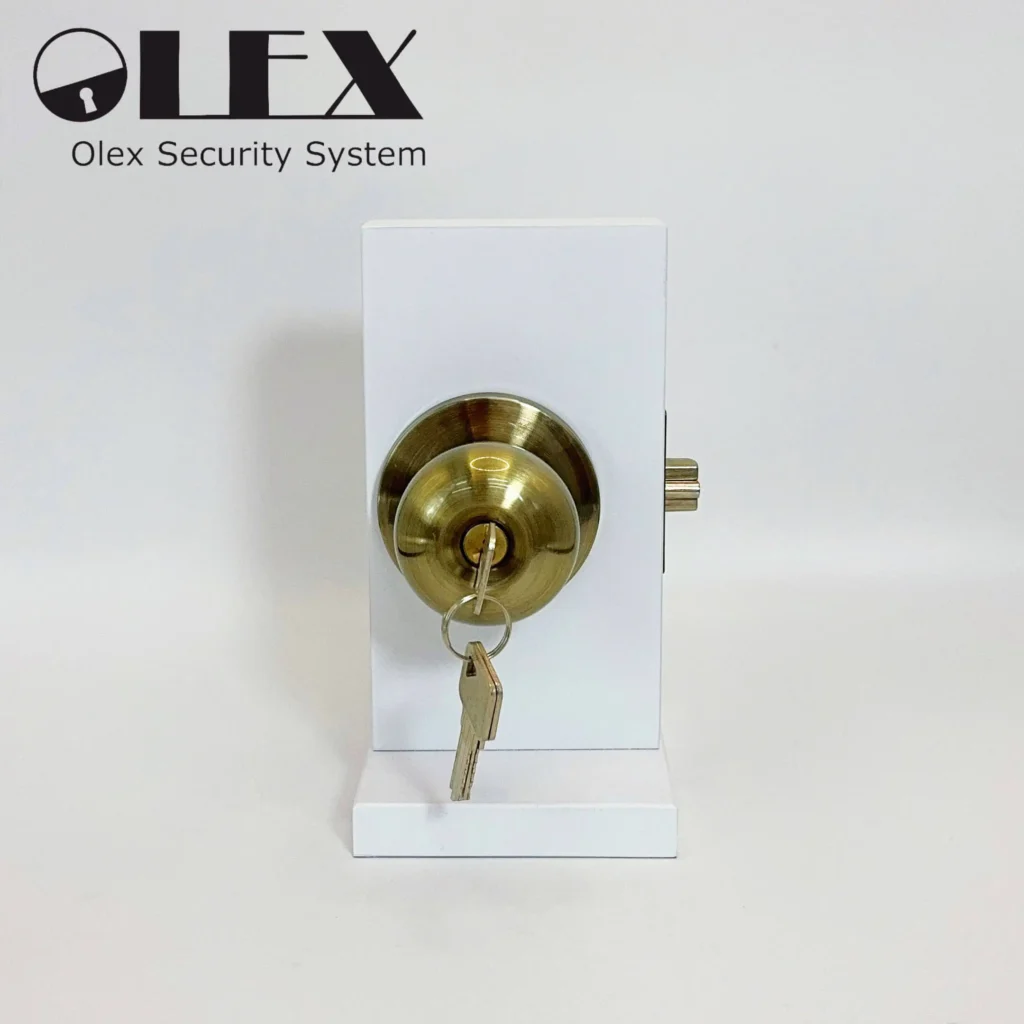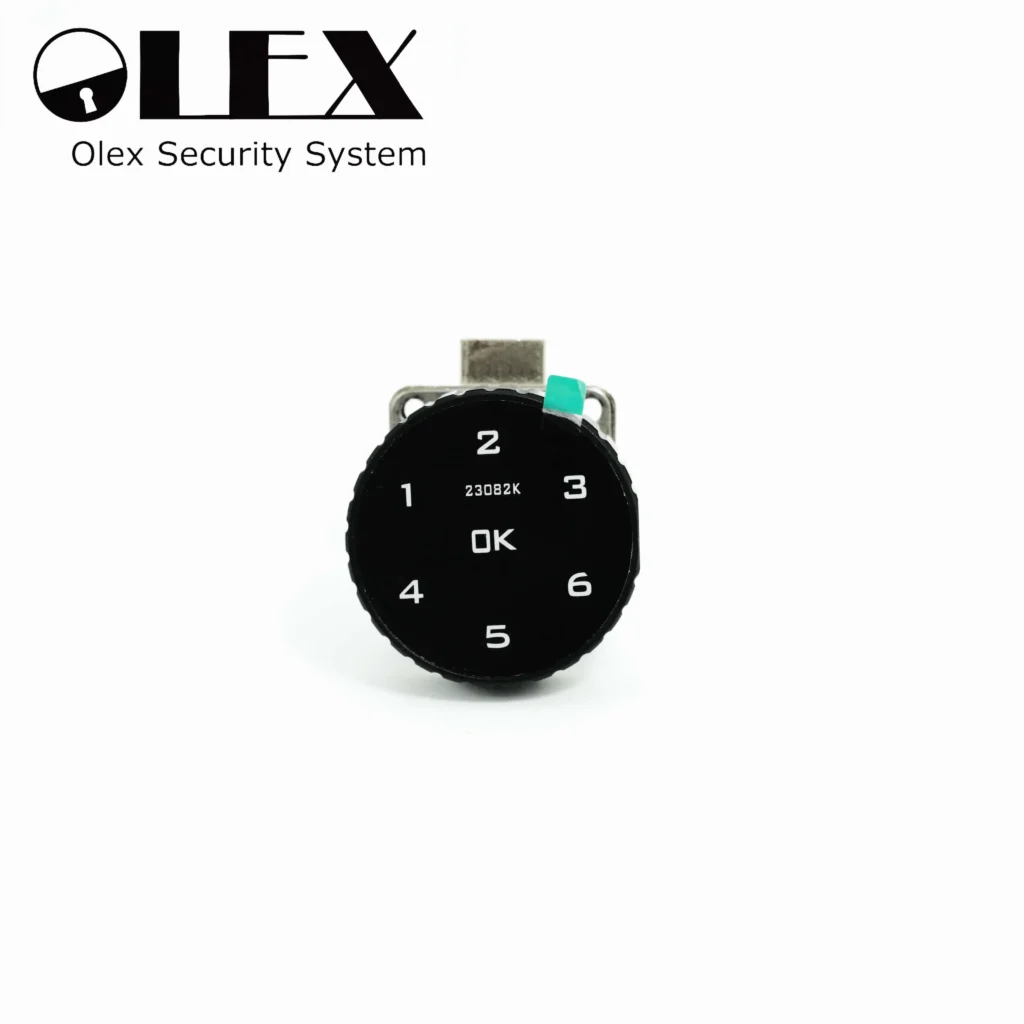5 Smart Lock Tips: Avoid the Gimmicks and Choose Wisely!
Fully Automatic vs. Semi-Automatic: Which is Better?
Smart locks have become a popular choice for modern home security, offering convenience and enhanced safety. However, the decision to install a smart lock comes with its own set of dilemmas: Should you go for a semi-automatic or fully automatic model? Is fingerprint recognition enough, or should you invest in more advanced features? What happens if the lock malfunctions and you can’t get in?
Given that home security is paramount, it’s essential to approach this decision with caution and thorough consideration. This guide will help you navigate the complexities of choosing the right smart lock for your home.
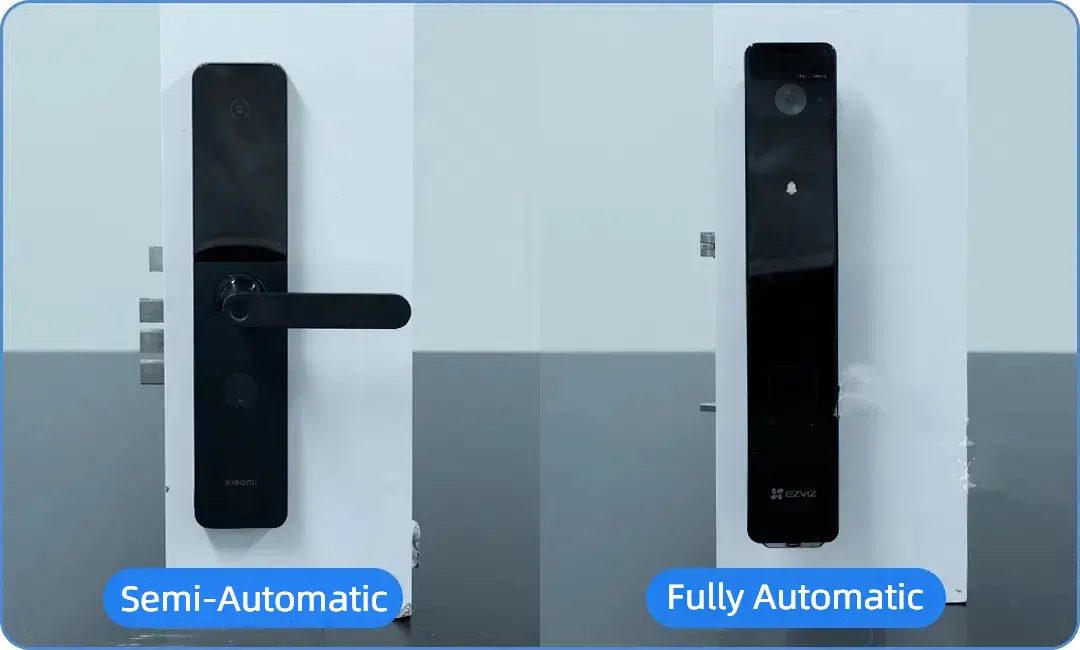
The first major decision is whether to choose a semi-automatic or fully automatic smart lock.
- Semi-Automatic Smart Locks (Manual Transmission): These are often characterized by a traditional horizontal handle (lever-style). They require two actions: identity verification and manual unlocking by pressing down the handle. Similarly, to lock the door, you need to lift the handle manually. Semi-automatic locks are generally more durable and stable over the long term because they have fewer mechanical parts that can fail.
- Fully Automatic Smart Locks (Automatic Transmission): These typically feature a push-pull handle. Once your identity is verified, the lock automatically disengages, and the door opens. To lock, you simply close the door, and it locks itself. This is particularly useful for those who frequently forget to lock the door. Fully automatic locks often come with multiple unlocking methods, such as 3D facial recognition, fingerprint, palm vein, iris scanning, and more. They also tend to offer additional features like remote unlocking and logging entry data. However, these benefits come at a higher price due to the advanced technology involved.
Keyless Entry: A Growing Trend
Many people choose smart locks primarily to eliminate the need for keys. Here are the main unlocking methods:
- Fingerprint Recognition:
- Optical vs. Semiconductor: Optical sensors use light to capture fingerprint images, while semiconductor sensors detect electrical differences to form a fingerprint image. The latter is more secure, precise, and responsive, offering live detection features to ensure only real fingerprints are accepted.
- 3D Facial Recognition: Ideal for homes with elderly individuals who may have worn fingerprints. This technology builds a 3D model of the face for quick and accurate recognition, adapting well to various lighting and environmental conditions. Despite being pricier (around $400 and up), it provides a high level of convenience and security.
- Emerging Methods (Finger Vein, Palm Vein): These methods offer high security and accuracy but are less convenient than facial recognition due to more steps involved. They are also generally more expensive.
- Auxiliary Unlocking Methods: Additional methods include mechanical keys, remote unlocking via an app, NFC, combination passwords, temporary passwords, and more. These options can be chosen based on personal preference and need.
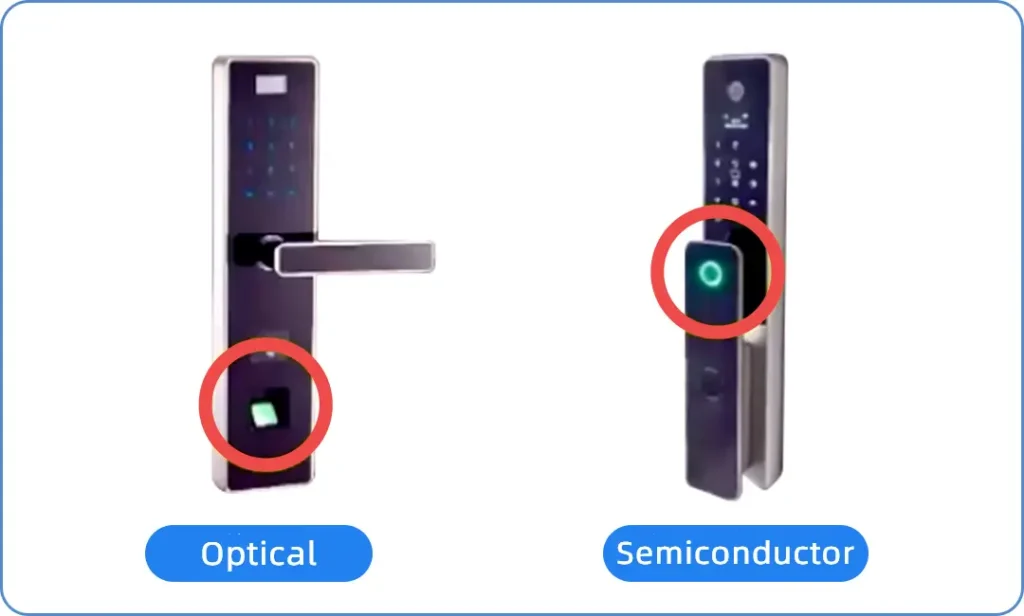
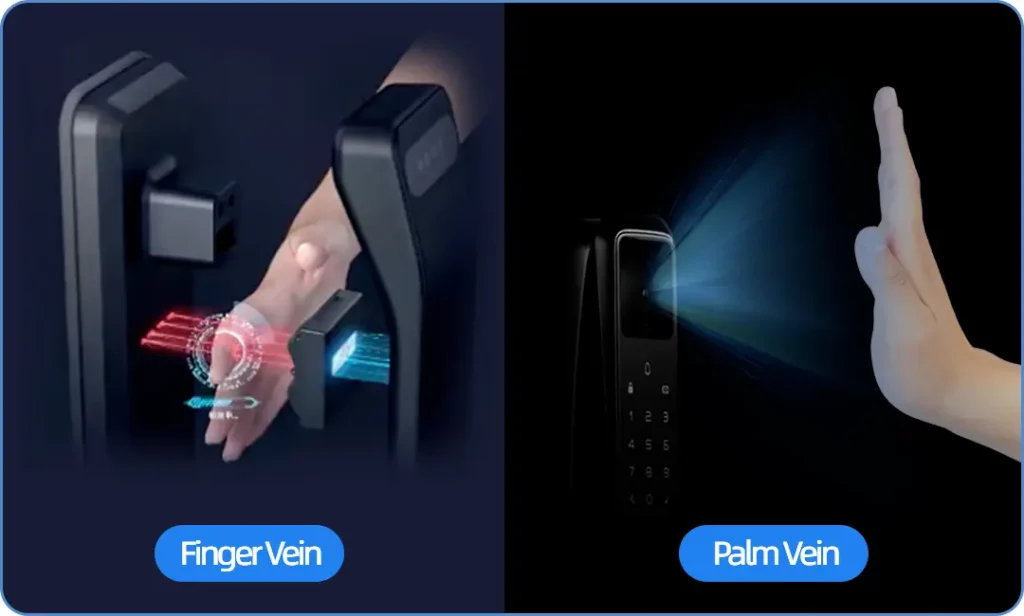
Avoid Cheap smart lock: Quality Matters
The smart lock market offers a wide spectrum of options, from budget-friendly to high-end premium choices. When selecting a smart lock, it’s crucial to resist the allure of low prices and seemingly attractive “value for money” deals. While it might be tempting to save a few bucks, the long-term consequences of opting for a cheap, substandard lock can be severe.
Cheap smart locks often cut corners by using inferior materials and outdated technology. These cost-saving measures compromise the lock’s durability and security features, making them easy targets for tampering and break-ins. In many cases, these locks may not even meet the minimum safety standards required for consumer products, posing significant security risks to your home and family.
Investing in a reliable smart lock involves more than just paying for the device itself. Quality smart locks require substantial investment in research and development to incorporate advanced security features such as encryption, biometric recognition, and tamper alerts. These features ensure that the lock not only provides convenience but also maintains robust security against potential threats. This R&D investment is what justifies the higher price points of reputable smart lock brands.
Moreover, established brands in the smart lock industry have a proven track record of quality and reliability. They have the resources to continually update their products with the latest security patches and technological advancements, ensuring your lock remains secure over time. These brands also offer comprehensive customer support and warranties, providing peace of mind that you are protected against any defects or issues that may arise.
In contrast, lesser-known or cheaper brands may offer little to no after-sales support, leaving you stranded if the lock malfunctions or fails to provide the security it promised. The initial savings quickly evaporate when you have to replace a faulty lock or, worse, deal with the aftermath of a security breach.
Therefore, when choosing a smart lock, prioritize established brands known for their quality and reliability. Look for locks that have undergone rigorous testing and certification from independent security organizations. While these options may come with a higher price tag, the investment is worthwhile for the safety and security of your home. Remember, in the realm of smart locks, you truly get what you pay for—opting for quality over cost will save you from future headaches and potential security risks.
Importance of After-Sales Service
Smart locks can also encounter issues such as electronic or mechanical malfunctions, making high-quality after-sales service crucial. When choosing a brand, look for those that offer comprehensive support, including professional service teams, extended warranty periods, efficient customer service, and a widespread service network. Additionally, ensure that the brand can quickly respond to user needs, providing timely repair and replacement services to guarantee the long-term reliability and security of the smart lock.
Key Considerations Before Purchase
- Door Size and Compatibility: Ensure the lock is compatible with your door type and size. Consult customer service for specific installation requirements.
- Door Frame Gap: Ensure there’s enough gap to accommodate a fully automatic lock, though this is generally not an issue with most doors.
- Lock Cylinder Grade: Choose locks with high-security lock cylinders (e.g., C-grade), which offer better protection against break-ins.
- Interactivity: Advanced smart locks can communicate with you about visitors and allow remote control features, enhancing convenience and security.
- Battery Type:
- Dry Batteries: Common in semi-automatic locks, these need yearly replacement and can suffer from leakage issues.
- Lithium Batteries: Used in fully automatic locks, they support more features and longer usage but can have reduced capacity in cold weather.
Additional Security Features
When selecting a smart lock, it is crucial to look for models equipped with comprehensive security systems. These systems should include visitor log functions, which can provide detailed records of each access attempt, and anti-tampering alarms that activate if the lock is subjected to physical tampering. Additionally, incorrect password alerts are essential, warning you if multiple incorrect password attempts are made. Other advanced features, such as virtual passwords, voice-activated video monitoring, and remote unlocking capabilities, can further enhance your home’s security. The more robust and comprehensive the security features, the safer your home will be.
Lock Grades and Mechanisms
- Lock Grades:
- A-Grade: Basic security, easily picked.
- B-Grade: More complex and secure, with lower inter-opening rates.
- Super B or C-Grade: Highly secure, nearly impossible to pick, often used in high-end smart locks.
- Lock Mechanisms:
- Single Bolt: Suitable for non-entry doors, often used with smart access systems.
- Multipoint Locking Systems: Common in high-security doors, offering multiple locking points for enhanced security.
Conclusion
Choosing the right smart lock is not just about the convenience of keyless entry, but also about ensuring the safety and long-term peace of mind for your home. While cheap, unreliable smart locks may seem cost-effective in the short term, they can lead to more problems and security risks. It’s crucial to focus on reputable brands that offer comprehensive security features such as visitor logs, anti-tampering alarms, and incorrect password alerts, which can significantly enhance your home’s security. Additionally, robust after-sales support is indispensable, especially from brands that provide professional service teams, long warranty periods, 24/7 customer service, and widespread service networks. Ultimately, making the right choice will not only bring modern convenience but also unparalleled peace of mind.

